The Mercedes-Benz SLK, presented in Turin in April 1996, is of course not yet a classic car, but it is a popular youngtimer. And its lineage ultimately goes back to the Mercedes-Benz 190 SL.
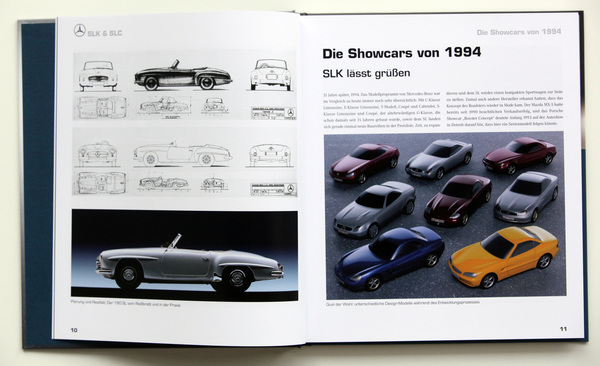
The first study was presented in 1994, a response to the Mazda MX-5 and the anticipated Porsche Boxster. And now there is a book about it that not only briefly covers the history of its development, but also sheds light on all subsequent generations right up to today's SLC. The title is fitting: Mercedes-Benz SLK & SLC - All generations, all model series.
SLK = sporty, light and short
The SLK was the lower end of the Mercedes range on the sports car side. Initially equipped with four cylinders, it also came to enjoy V6 engines from spring 2000. This improved the driving performance, but also increased the weight.
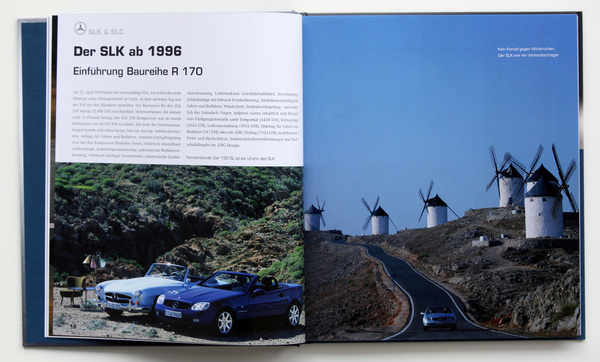
The almost four-meter-long convertible remained short until modern times, as even the current SLC variant is only a little more than 4.1 meters long.
The vario-roof and its predecessors
What set the SLK apart from all its competitors in 1996 was its folding and retractable metal roof. The SLK thus combined the advantages of a hardtop with those of a folding roof, albeit at the expense of trunk space.
Author Michael Allner rightly devotes several pages to the vario-roof and does not forget to mention those automobiles that were equipped with a perhaps somewhat less sophisticated but similar feature, such as the Peugeot 401 Eclipse or the Ford Fairlane.
The SLK and its successors
While around 1/3 of the book is devoted to the original SLK R170, the remaining pages are devoted to the successor models R171 and R172.
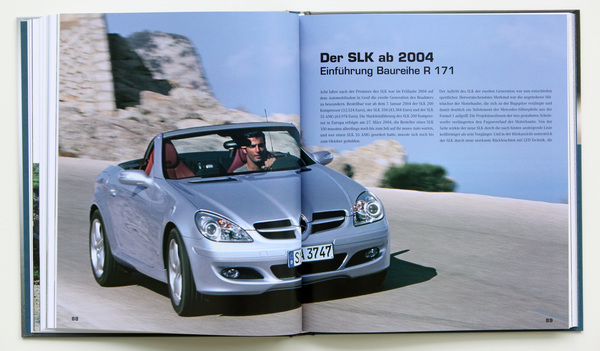
It is interesting to follow how Mercedes pursued different design philosophies and, for example, introduced the Formula 1 nose on the 2004 R171, which was later abandoned in favor of a family resemblance to the big SL.
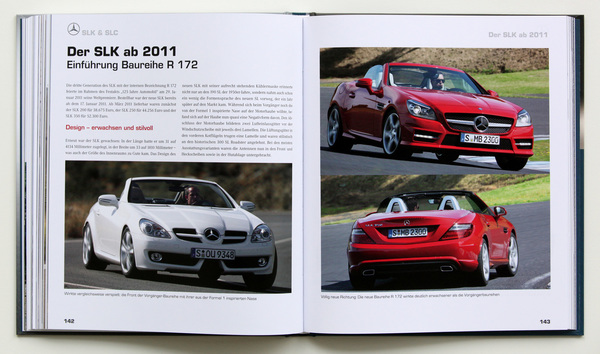
A special chapter in the history of the R170 is also briefly highlighted, as the Chrysler Crossfire was based on the same technology.
Powerful images
The 232-page book is very generously illustrated, most of the pictures are in color, only a few drawings are black and white. You wouldn't have expected anything else from a book about cars that are less than 30 years old.
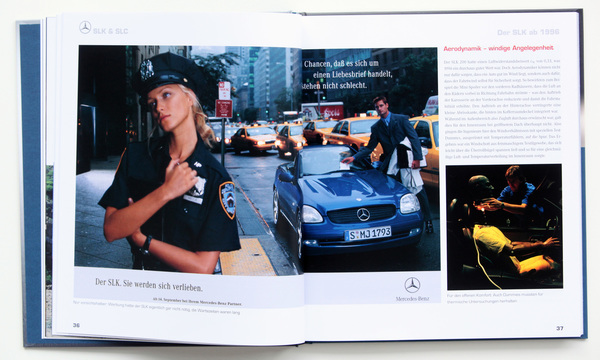
Most of the pictures are from factory stock, but some were also contributed by Auto Motor und Sport.
With data section
Detailed technical data is available for each model, supplemented with the basic prices at the time. Unfortunately, these tables are scattered throughout the book and are not always located where you would look for them straight away. A bundled compilation at the end of the book would perhaps have been more practical here. We would also have liked to have seen the quantities produced for the models.
We did like the list of paint finishes and interiors at the end of the book. The plan drawings with the dimensions at the back are also nice.
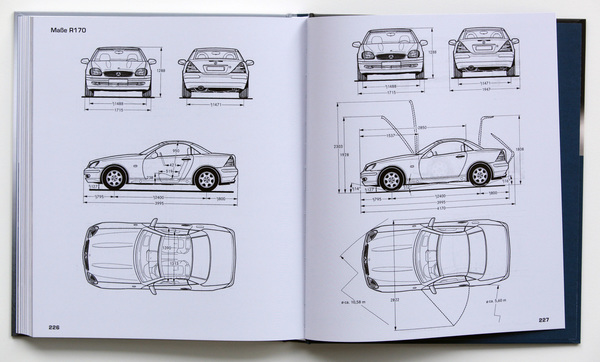
Like many other books, this work unfortunately does not include a keyword index, which would make it easier for the searcher to track down specific details.
EUR 39.90 is a considerable sum, but anyone looking for a good compilation of all SLK models and their peculiarities will certainly be happy with the new book from Motorbuch Verlag. And who knows, perhaps one day the SLK really will take over from the 190 SL among collectors and then, at the latest, a book about it will also belong on the shelf.
Bibliographical details
- Title: Mercedes-Benz SLK & SLC - All generations, all model series
- Author: Michael Allner
- Language: German
- Publisher: Motorbuch Verlag
- Edition: 1st edition, September 2017
- ISBN: 978-3-613-03998-8
- Format: hardcover, 230mm x 265mm
- Size: 232 pages, 14 black and white images and 295 color images
- Price: EUR 39.90
- Buy/order: Online at amazon.de, online at Motorbuch Verlag or at the relevant bookstore

























